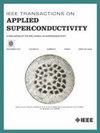Ni-Co-Cr-Mo合金的力学性能
IF 1.8
3区 物理与天体物理
Q3 ENGINEERING, ELECTRICAL & ELECTRONIC
引用次数: 0
摘要
由于有效的增强材料必须既具有高的承载能力,又具有在外力作用下的高抗变形能力,因此要求既有高的机械抗拉强度,又有高的弹性模量。强度和模量通常在低温下被放大,因此在材料应用之前,必须对其在低温和室温下的性能进行表征。在这项研究中,我们研究了一种镍基合金,其杨氏模量高于不锈钢,而不锈钢通常被用作低温环境中的增强材料。我们的测试合金经受了一种热机械加工,通过非常细小的平面缺陷来强化合金。我们首先在室温下将合金变形成不同的大小,然后我们测量了它在低温和室温下的性能。最后,我们评估了在室温下变形到不同变形应变的材料的性能(在两种温度下)。我们发现我们的测试合金在弹性模量和机械强度上都具有各向异性,并且在低温下比在室温下具有更强的抗塑性变形能力。然后,我们研究了在不同磁场和不同低温下的物理性质变化。本文总结了1)合金显微组织的变化和2)有效增强材料所需的性能。本文章由计算机程序翻译,如有差异,请以英文原文为准。
Mechanical Properties of a Ni-Co-Cr-Mo Alloy
Because effective reinforcement materials must have both high capacity for load bearing and high resistance to deformation under external force, they require both high mechanical tensile strength and a high elasticity modulus. Both strength and modulus are usually amplified at cryogenic temperatures, so properties at both cryogenic and room temperatures must be characterized before the materials can be used for applications. In this study, we investigated a nickel-based alloy whose Young's modulus is higher than that of the stainless steels that have commonly been relied on as reinforcement materials in cryogenic environments. Our test alloy was subjected to a type of thermo-mechanical processing that strengthens the alloy through very fine planar defects. We first deformed the alloy to various magnitudes at room temperature, and we then measured its properties at both cryogenic and room temperatures. Finally, we assessed the properties (at both temperatures) of the materials that were deformed to different deformation strains at room temperature. We found that our test alloy had anisotropy in both elastic modulus and mechanical strength and had more resistance to plastic deformation at cryogenic temperatures than at room temperatures. We then investigated physical property changes in various magnetic fields and at various cryogenic temperatures. This paper summarizes 1) the changes that occurred in the microstructure of our alloy and 2) the properties desirable for effective reinforcement materials.
求助全文
通过发布文献求助,成功后即可免费获取论文全文。
去求助
来源期刊

IEEE Transactions on Applied Superconductivity
工程技术-工程:电子与电气
CiteScore
3.50
自引率
33.30%
发文量
650
审稿时长
2.3 months
期刊介绍:
IEEE Transactions on Applied Superconductivity (TAS) contains articles on the applications of superconductivity and other relevant technology. Electronic applications include analog and digital circuits employing thin films and active devices such as Josephson junctions. Large scale applications include magnets for power applications such as motors and generators, for magnetic resonance, for accelerators, and cable applications such as power transmission.
 求助内容:
求助内容: 应助结果提醒方式:
应助结果提醒方式:


